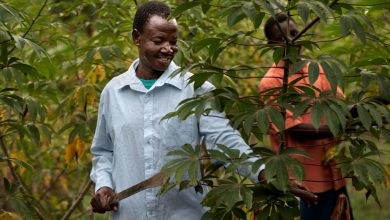The Journey of the Cassava Flour Supply Chain
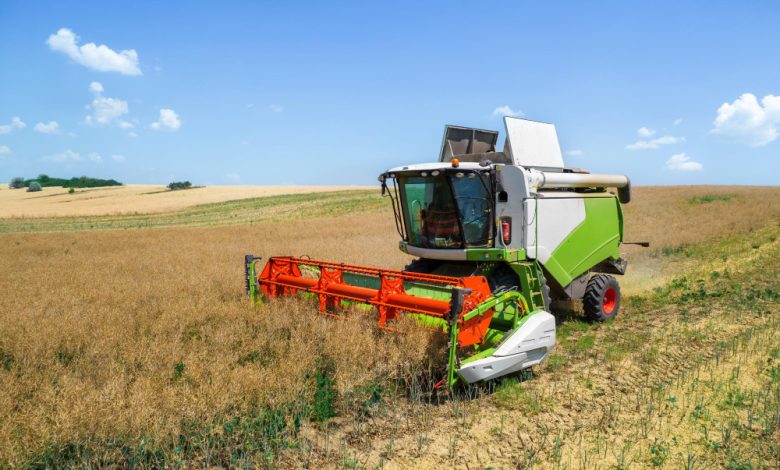
From Farm to Flour: The Journey of the Cassava Flour Supply Chain
Cassava, also known as Manihot esculenta, is a staple crop with a crucial role in food security and various industries. Its transformation from a root to refined flour involves a detailed and well-coordinated cassava flour supply chain, ensuring quality, sustainability, and economic value. Let’s explore each stage of this journey, from cultivation to the final product.
Cultivation: The Starting Point.
The cassava flour supply chain begins on the farm. Cassava is cultivated in tropical regions, where it thrives in well-drained soils with consistent rainfall. The crop is highly resilient, and capable of withstanding harsh conditions, making it a dependable source of food and income for farmers.
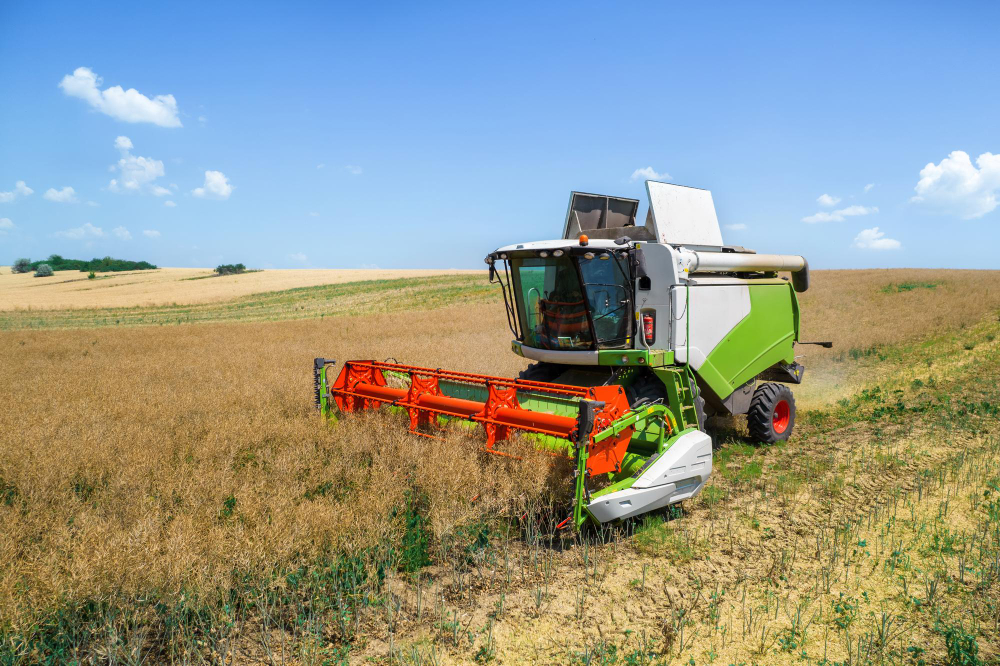
Land Preparation and Planting
Farmers prepare the land by clearing weeds and tilling the soil to create an optimal environment for planting. Cassava cuttings are planted in rows and sprout roots and shoots within weeks, eventually growing into mature plants over 8 to 18 months.
Sustainable Practices in Cultivation
As part of improving the cassava flour supply chain, many farmers are adopting sustainable practices, like intercropping with legumes to enhance soil fertility and using organic fertilizers. These methods not only boost yields but also contribute to soil health, ensuring long-term sustainability in the supply chain.
Harvesting: Key Stage in the Supply Chain
The harvesting stage is crucial in the cassava flour supply chain. Timing is everything; cassava is typically harvested when the roots reach optimal maturity—usually between 9 to 12 months after planting. Harvesting too early may reduce starch content, while late harvesting can lead to fibrous roots, affecting the quality of flour.
Manual and Mechanized Harvesting
Manual harvesting is common, but as the supply chain modernizes, mechanized harvesting is becoming more popular. It increases efficiency and reduces labor costs, allowing for quicker transportation to processing facilities and preventing spoilage.
Initial Processing: Preparing Roots for Refining
Upon arrival at the processing facility, the roots enter the next phase of cassava flour production: initial processing.
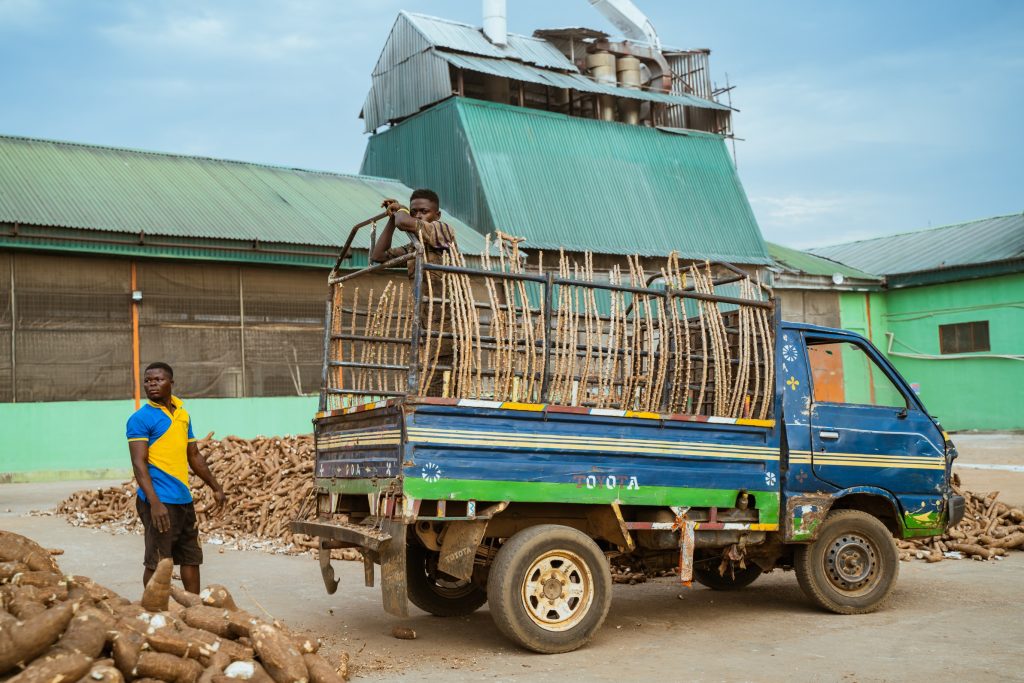
Washing and Peeling
The roots are thoroughly washed to remove dirt and impurities. Peeling is a vital step because the cassava skin contains compounds that need to be removed for safety. The peeled roots are then prepared for the next step—chipping and grating.
Chipping and Grating
Chipping or grating increases the surface area for drying and helps reduce harmful compounds, enhancing the overall quality of the cassava flour produced.
Drying and Milling: Turning Roots into Cassava Flour
The drying and milling stages are pivotal in the cassava flour supply chain. Traditionally, cassava chips are sun-dried, but modern facilities like Psaltry International use industrial dryers to ensure consistent moisture levels and to avoid fermentation. This consistency is vital for producing high-quality flour that meets market standards.
Milling:
Once dried, the chips are milled into a fine powder. The milling process involves grinding and sifting, resulting in a smooth, fine flour. This crucial step in the cassava processing guarantees that the final product is of high quality and ready for packaging.
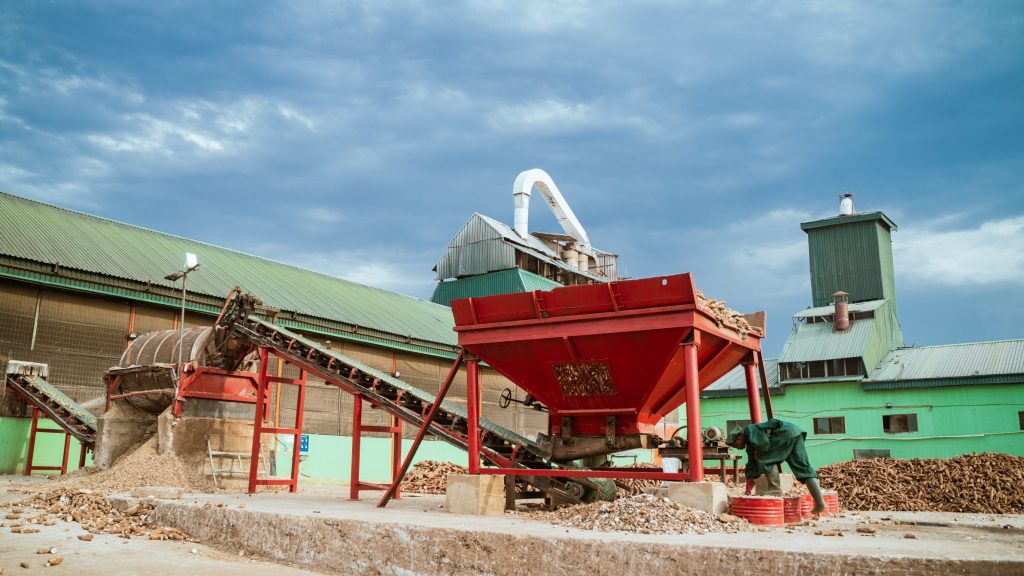
Quality Control and Packaging: Upholding Standards
Quality control is essential to ensure the flour meets industry standards. Tests for moisture content, cyanogenic compounds, and microbial contamination are conducted to guarantee a safe, high-quality product.
Packaging:
The cassava flour is then packaged in moisture-proof bags, preserving its freshness and preventing contamination. Proper labeling with origin, nutritional value, and expiration dates ensures transparency and compliance with regulations, supporting the integrity of the cassava flour.
Distribution: Bringing Cassava Flour to the Market
The final stage of the cassava flour supply chain involves distribution. The packaged flour is transported to wholesalers, retailers, and consumers. Efficient logistics are key in maintaining product quality during transit, especially in humid regions where moisture can compromise the flour.

Market Opportunities
As the demand for gluten-free products increases, the cassava flour supply chain continues to expand. Its applications range from baking and pasta-making to industrial uses like bioethanol and adhesives, highlighting its versatility.
Innovations and Sustainability
Innovation is transforming the supply chain, enhancing efficiency from cultivation to processing. Technologies like precision agriculture and automated drying methods are helping to increase productivity while reducing waste.
Sustainable Innovations
Many processors are incorporating sustainable practices within the processing of cassava, such as recycling waste into animal feed or biofuels. These efforts help reduce the environmental impact and create additional revenue streams, making the supply chain more resilient and eco-friendly.
The Resilience of the Cassava Flour Supply Chain
The journey of cassava from farm to flour illustrates the complexity and resilience of the cassava flour supply chain. From cultivation to distribution, every stage involves precise processes that ensure product quality and sustainability.
As the popularity of gluten-free and alternative flours rises, the processing of cassava is set to play a significant role in the global market. By investing in innovative technologies and sustainable practices, the industry can maximize efficiency and minimize environmental impact, making cassava flour a preferred choice for consumers and businesses alike.
Understanding this comprehensive journey showcases the immense effort behind every bag of cassava flour, a product born from a well-orchestrated and ever-evolving supply chain.



